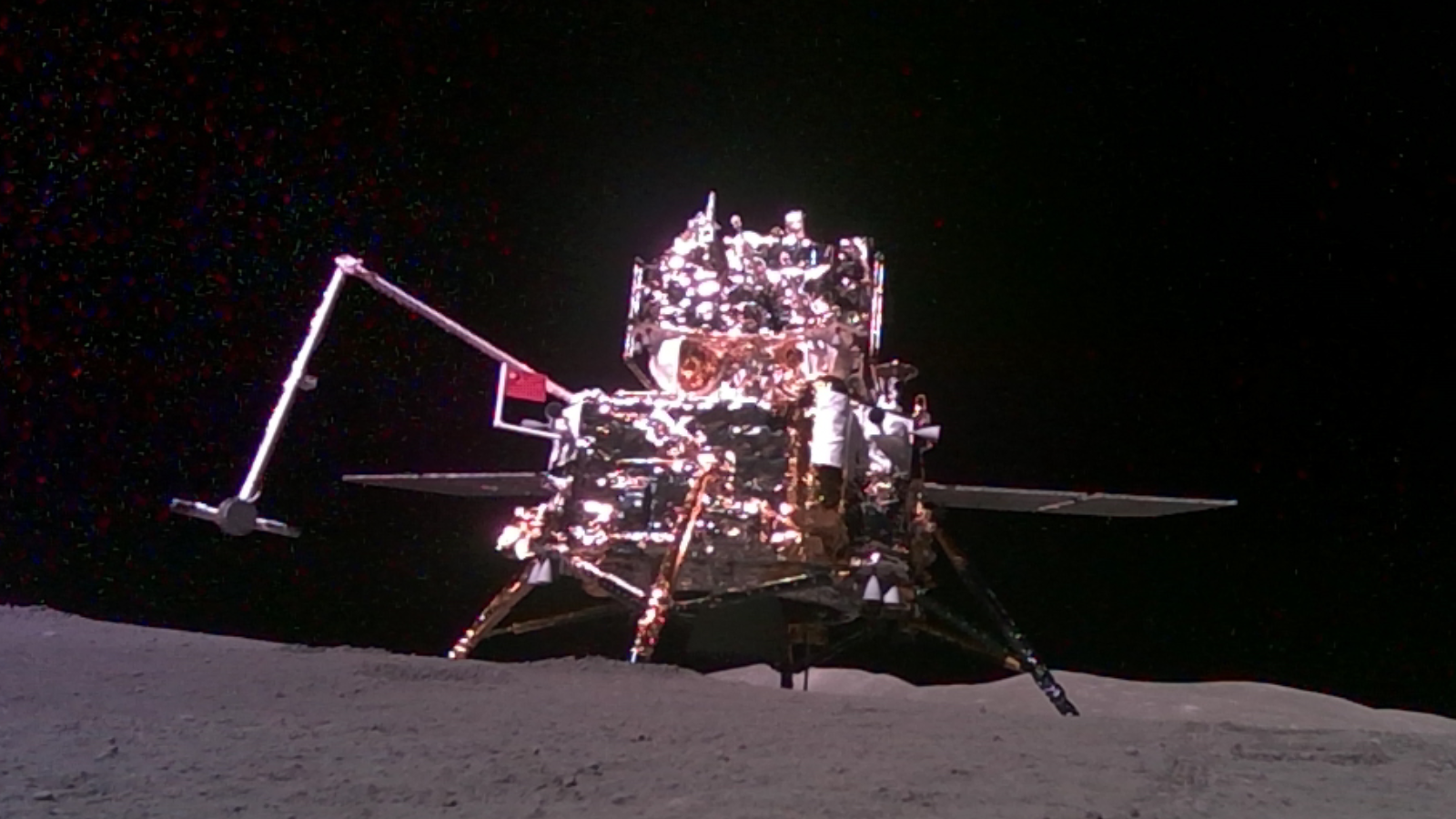China's space agency brought the 1st lunar far side samples to Earth this year — here's what's next
The Chang'e 6 mission collected samples from Apollo crater and brought them to our planet in late June.

China's space agency has opened up a first round of applications for researchers to borrow its Chang'e 6 lunar far side samples.
Chang'e 6 launched in May this year. The complex, multi-spacecraft, 53-day mission collected samples from Apollo crater on the far side of the moon and returned to Earth in late June.
Now, small portions of the 4 pounds and 4.29 ounces (about 1,935 grams) of collected samples are available for domestic applications, according to the China National Space Administration's (CNSA) Lunar Exploration and Space Engineering Center (LESEC), state media Xinhua reported. The deadline for applications is Nov. 22.
The material is the first-ever collected from the far side of the moon. Analysis of the samples could lead to new theories regarding the origin and evolution of the moon, including providing new insights into why the near and far sides of the moon are so different. An initial study found that the Chang'e 6 samples are lower in density compared to previous lunar samples, which were retrieved from the near side of the moon.
Related: China returns samples from the moon's far side in historic 1st (video)
While the samples are currently only open to domestic Chinese applications, they will later be made available for applications from international institutes. This will likely come in around two years' time. The Chang'e 5 nearside samples were made available to international applications in 2023; two-and-a-half years after their collection from Oceanus Procellarum in 2020. NASA scientists are also able to apply for the samples, despite U.S. legal barriers on cooperation.
The seventh round of applications for Chang'e 5 samples also shares the Nov. 22 deadline.
Get the Space.com Newsletter
Breaking space news, the latest updates on rocket launches, skywatching events and more!
Join our Space Forums to keep talking space on the latest missions, night sky and more! And if you have a news tip, correction or comment, let us know at: community@space.com.

Andrew is a freelance space journalist with a focus on reporting on China's rapidly growing space sector. He began writing for Space.com in 2019 and writes for SpaceNews, IEEE Spectrum, National Geographic, Sky & Telescope, New Scientist and others. Andrew first caught the space bug when, as a youngster, he saw Voyager images of other worlds in our solar system for the first time. Away from space, Andrew enjoys trail running in the forests of Finland. You can follow him on Twitter @AJ_FI.









